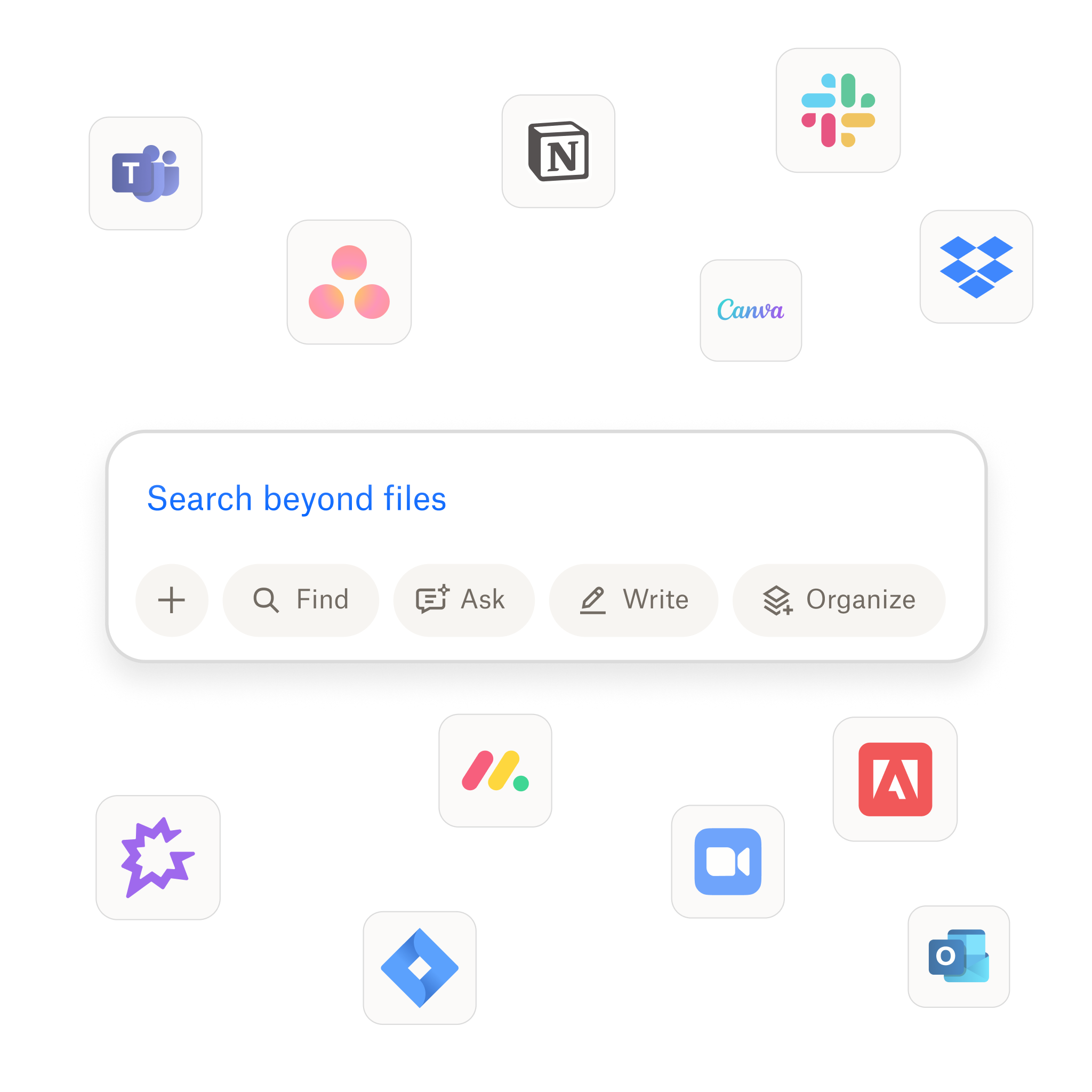
In fast‑moving teams, there’s often pressure to produce quickly.
Whether that’s marketing launches, social posts, ad campaigns, or sales materials, there’s a lot to get done. But speed can come at a cost—when copy, visuals, or messaging drift from brand guidelines, you risk diluting your identity, confusing your audience, and losing value.
Here, we’ll explore how letting brand voice wander off costs more than you might expect—plus how investing in alignment can actually pay off. Then we’ll show how Dash features can help you keep the voice tight in every asset.

What losing the brand voice really means
It can be difficult to understand what a brand voice actually is in practice. When we say brand voice misalignment (or drift), we’re talking about things like:
- Messaging that doesn’t reflect your brand’s core values or promises
- Tone shifts, such as being too formal in some channels and too casual in others
- Outdated taglines, slogans, or positioning being used accidentally
- Visual elements (like fonts, colors, logo usage) changing or being inconsistent
- Multiple teams, agencies, or freelancers interpreting the brand style differently
These drift factors are often small in isolation. Still, cumulatively they can damage how your brand is perceived, how trustworthy and clear you appear—and ultimately your ability to convert, retain, and price effectively.
Quantifying the costs—what happens when brand alignment slips
It’s not just a weird looking social post that comes from poor brand alignment. There’s a growing body of research showing there are real business impacts when branding or messaging is inconsistent. These include:
- Lower revenue: Companies often experience reduced revenue due to lost conversions, confused customers, or diluted messaging.
- Higher customer acquisition costs (CAC): CAC goes up when marketing messages are unclear or misaligned. In some cases, CAC increases substantially because prospects need more touchpoints to understand value.
- Lower conversion rates: Conversion rates can drop significantly when landing pages, ads, or sales materials don’t align with brand expectations—because customers don’t recognize the brand or trust where they are.
- Churn or attrition increases: Customers who are promised one experience but get another lose trust. Churn is often higher in companies with weak brand consistency.
- Increased cost and time in creative operations: Wasted design or agency time increases costs. Teams may recreate materials because they can’t find the right logo or style file—these wasted hours add up fast.
Once you see the costs or poor brand alignment, it’s much easier to see how important it is in marketing work—where trust and familiarity carry a heavy premium.
Less obvious costs—trust, positioning, and pricing
The bottom line is the most profound area that weak branding can have an impact. However, some costs are harder to attribute—but equally important. These include:
- Eroded trust: An inconsistent brand feels sloppy. Consumers are less likely to believe your claims if your materials don’t reflect a unified identity. That means, over time, trust drops.
- Poor market differentiation: If your messaging keeps shifting, your unique value gets blurred—you may end up competing only on price and be unable to distinguish yourself among potential prospects.
- Reduced pricing power: Strong brands command premium pricing. Drift dilutes perceived quality or authority, which means less margin for your company to draw from customers.
- Brand recall and recognition drops: If each campaign feels different, customers may not recognize your brand across touchpoints, which weakens memory and reduces their response to ads or promotions.
Brand misalignment is just bad news all over—it weakens the finances of your organization and the recognition of your brand at the same time. This can occur during many parts of your day-to-day operations.
When brand drift is most risky
Brand drift can happen slowly and pressure, fast work environments, or having too many stakeholders involved can make it worse. Small issues in the short term can become bigger problems down the line.
Certain situations exacerbate the costs (and therefore risks) of brand misalignment, such as:
- Rapid scaling, new markets, or new channels (such as social media, new partner content, or regional expansion)—more moving parts = more risk
- Multiple agencies or freelancers handling content without centralized oversight
- High‑volume campaigns (lots of output at a high frequency) mean more chances for small errors to accumulate
- Tight deadlines where just getting the work out the door without adequate quality checks becomes the norm
- Low visibility into current brand guidelines and assets among team members and associated tools
It can happen in many contexts, like a new product launch or larger campaign. That’s why leaders need to stay alert and create a single source of truth with processes that keep teams aligned—even when stressed.
Find the right guidelines—every time
With context-aware queries in universal search, it’s easy to make sure teams surface the right brand messaging.
How brand alignment actually saves you money and drives value
Brand alignment might seem like extra work as it can involve more reviews and effort. However, alignment saves resources and boosts team confidence—so the returns are both measurable and felt.
It may sound like a lot of work, and it certainly can be—but here are ways investing in alignment reaps returns:
- Faster approval cycles—there’s less back‑and‑forth when everyone refers to the same guidelines and assets
- Reduced production waste—you avoid pointless rework, meaning fewer wrong logo or old slogan moments
- Higher conversion and retention—customers who see consistency tend to trust more and stay longer
- Stronger marketing ROI—when messaging resonates, acquisition and engagement costs drop
- Better internal efficiency and morale—teams feel more confident when they know exactly what the brand expectations are
Maintaining a consistent brand alignment is well worth the effort. While it does take effort and discipline, tools like Dropbox Dash can make it that bit easier to manage.
How Dropbox Dash helps guard against voice drift
Using the AI-powered features in Dash helps make many tasks easier. Here’s where Dash provides real protection against the costs above:
- Surface the latest messaging in universal search: With universal search, team members can find brand guidelines, official messaging, slogans, and approved visual assets in seconds. That means no more guessing or accidentally using outdated files.
- Maintain version control and promote visibility: Universal search is context aware, so you can type in “What’s the latest brand guidelines and Dash ensures you surface the current approved version of logos, templates, and decks. This prevents mix‑ups and keeps work visible across projects.
- Create a centralized asset library with Stacks: Stacks in Dash make it easy for leaders to arrange and organize all approved brand materials, templates, style guides, and key messages. These can be stored, shared, and managed easily—so teams can pull from that repository rather than recreating.
- Use Dash Chat to detect drift and summarize feedback: When reviews happen, Dash Chat can help identify when copy or visuals deviate from brand norms and flag them. Ask for a summary about a file to get clarity about where drift is happening—tweaking your messaging accordingly.
- Search across connected tools: Dash securely connects to all your apps. Since many companies have files in multiple systems or channels, being able to search across them (not just one folder or one drive) helps surface any inconsistent messaging hiding elsewhere.
By pulling the latest brand assets into one place, spotting inconsistencies, and making context instantly searchable, Dash gives teams the guardrails they need to stay consistent without slowing down.

What to do now—a checklist to prevent losing brand voice
Here’s a practical checklist you can use to make sure your brand stays aligned, no matter how fast campaigns are moving:
- Run a brand audit—sample recent campaigns, assets, ads, or website content, looking for drift in tone, visuals, and brand messaging.
- Ensure guidelines are up‑to‑date and accessible—whether it’s a style guide, brand voice document, template library, or messaging hierarchy, you should keep what you need and discard what’s no longer necessary.
- Centralize brand assets—put logos, templates, visual identity files, approved messaging (and any other important files), in a tool or repository like your Dropbox cloud storage.
- Train key stakeholders and creators—including any agency partners, freelancers, internal content creators, sales teams, and other team members, so everyone understands what being on‑brand actually means.
- Use tools with universal search, version control, and feedback capturing—so any drift is visible early and easily corrected.
- Schedule regular check‑ins and audits—try once a quarter or a similar cadence, as brand consistency is not a set-and-forget task.
Taken together, these steps give your brand the guardrails it needs to scale without losing clarity. Maintaining a consistent brand voice takes more than just publishing a style guide—it requires active habits and regular upkeep.
Keeping campaigns profitable by maintaining brand voice
Brand voice isn’t decorative—it’s business infrastructure. When campaigns drift, the loss is aesthetic at first, but it then goes on to impact trust, differentiation, or revenue. Fast may win short‑term, but consistency wins long‑term.
If you find teams are moving so fast that brand guidelines, messaging, and tone feel like suggestions rather than rules, that’s the moment to invest in tools and processes that enforce alignment while keeping workflows smooth.
Dropbox Dash helps you do exactly that—so you can move fast without losing sight of your brand. Get in touch to find out more about Dash or try a demo for free today.
Get started with Dash
.webp)

.svg)


